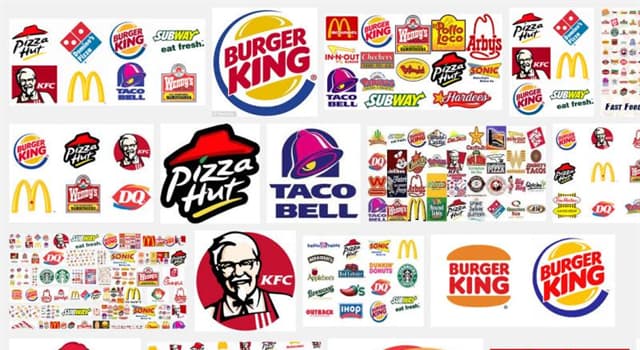A Complete Guide to SEO: What You Need to Know in 2020
Search Engine Optimization is an aspect of Internet Marketing and this suggests that there are other traffic generating methods online; however, SEO is a favorite among internet marketers and business owners, because, it’s a perfect source of organic traffic. When you desire to build credibility and brand loyalty for your business, SEO should be your preferred starting point.
According to stats, 93% of online experiences start with the search engine. What does this mean to new business or even thriving businesses? The answer is simple. It means that under normal circumstances, every business has a 9 out of 10 chances of being discovered through search engines. No wonder why search engine advertising is very important for your business growth.
What exactly is SEO, and how can you use it to promote your online business?
What is SEO?

Search engine optimization is a vital online marketing source that uses the search engine as a way of promoting online businesses. It is a very perfect source of free organic traffic. The search engines provide an organized structure for people to discover products or services online through conducting searches and using specific keywords.
According to Wiki the definition of SEO is as below
Search engine optimization (SEO) is the process of increasing the quality and quantity of website traffic by increasing the visibility of a website or a web page to users of a web search engine.
When people access your website as a result of specific keywords, they are regarded as organic, targeted, of primary traffic. Internet marketers observe that the inflow of people through search engines increases the conversation rate because they are interested in the product or service.
For example, When people search for an “iPhone case” via Google, thousands of websites offering the product will be displayed with links to their different websites. When searchers click through the links they will be taken to the website, and because they conducted the search which indicates their interest in the product, there is a good chance the prospects will buy the product or perform other forms of action on the website; this is the importance of SEO and why it’s the number one source of online advertising.
How SEO works:
Search engine advertising is made up of crawling, indexing, and selecting results. The search engine process is a technical one that requires solid knowledge and skill to execute. Below is a brief explanation of the process.
First is the crawling stage. It is called spidering which simply refers to the act of scanning a website’s keywords, sections, contents, images, headings, and hyperlinks by bots. These bots crawl the internet constantly to update data.
The indexing stage: After the scanning of the internet by bots, then indexing can occur. The result of crawling will usually lead to the successful addition of a website in a search engine which makes it visible. Indexing usually takes time depending on the quantity of data that requires crawling.
Whenever there is a change or update made n a website, it will be crawled again.
Selecting the result:
After a search query is submitted by a website owner, the search engine kicks to action to investigate the index and extracts corresponding outcomes.
The importance of SEO
Statistics show that about 93% of the world’s internet marketing traffic comes directly from an online search, while sixty-seven thousand (67,000) search engine searches are performed every second on Google. This is not all, 80% of people overlook paid ads in favor of search engine results.
These stats show the high relevance that search engine marketing has on other types of internet marketing. Below are some of the reasons why generating traffic through search engines is vital for your business.
1. Increased user experience:
Search engine optimization can boost users’ experience resulting in increased leads, clicks, and conversion rates.
2. It is an excellent source of primary leads:
SEO is a factor of inbound strategies including others like social media, referrals, content marketing, etc. Inbound tactics are an effective traffic generation avenue that is sure to result in the success of leads generation among B2C, B2B, and non-profit companies.
3. It brings about increased close rates:
Unlike out-bounds lead which has a close rate of 1.7%, SEO leads parades a whopping average close rate of 14.6%. This means that if a customer locates your service or products through searches, there is a very high tendency that he or she will either like your product, stay longer on your page, opt-in to your list or order your product.
4. Reduced advertising cost:
According to search journal, inbound leads coming from search result has the potential of reducing your cost of generating leads by 61%. Therefore, it reduces the cost of advertising hence boosting your bottom-line.
5. It promotes local business patronage:
With SEO, local clients may decide to visit your physical business address after their online search. Remember earlier in this write-up, it was declared that 91% of online experience begins through search engine searches, so imagine if after searching a particular keyword and your website shows up in number one result, the outcome will be a mammoth flow of leads to your website.
6. It builds the credibility of your business and brand loyalty:
Ranking on the top 3 search results will make prospects perceive you as an authority in your niche. It, therefore, shows that you are one of the best in your industry and this perception alone guarantees patronage and brand loyalty.
Types of SEO:
There are different SEO types, in this article, four types will be discussed briefly, and they are technical, on-page, local, and off-page SEO.
1.Technical SEO:
This is the technical strictures that influence a website’s search engine accessibility. The core objective of this type of SEO is to guarantees the effectiveness of search engine crawlers among others which are:
- Helping to optimize and check robot.txts that guarantees effective search engine website accessibility.
- Adopting coverage reports to discover and correct mistakes
- Creating and delivering XML Sitemap to the entire internet search engines
- making websites loads very fast on mobile and desktop devices
- Optimizing the URL and website structure.
2. On-page SEO:
This involves everything that has to do with the page plus how it can be made user and search engine-friendly. You must focus on optimizing all your site pages because search engine ranking is performed on a page to page basis. The key factors required for on-page optimization are:
- Title optimization. This is very important because the title of your site pages shows up on page results; therefore, it should be interesting and attractive. Optimizing your H1, H2, and H3 tags for various sections.
- Images: optimizing any image(s) used in your websites, if you don’t, search engines will not recognize it.
- Page formatting: Always take time to beautify your images and text before you publish the website. Avoid the habit of wrong formatting as it will work against you.
- Content SEO: This has to do with the quality of your website content and how you can make it better.
3. Off-page SEO:
Off-page SEO involves internet promotion. It focuses on the strategies adopted by you to advertise your website. There are different off-page SEO strategy, the major one is link building.
Popular websites have a greater propensity of receiving higher ranking than less-known sites. The major off-page SEO methods are link building and brand advertising,
4. Local SEO:
This type of SEO is created or is best suited for offline or local businesses alone. If you operate a business locally and you have a website, should you need to redirect online traffic to your local business via your website, practice local SEO?
SEO activities
The higher a website is in a search engine result the more chances of being seen by prospects. A website that does not show up in the first 10 results may not be seen by searchers, and this is why businesses fight for top search engine placements or ranking. Therefore, the totality of this type of advertising is not just about getting on the search engine, but about getting top ranking for better exposure.
This is why the best SEO guide will focus mostly on how to rank high in search results and importantly making your website convert using strategies.
Performing basic SEO activity
On-page SEO is technical and very important if you want to get indexed and ranked in the search engines. In the past on-page, SEO was all about meta-tags, headlines, and optimized content. Today, it’s a new ball game, the new SEO trends involve doing things differently to enjoy SEO in 2020.
So when creating your website, follow these tips:
- Discover what people are looking for before you start creating your website contents
- Apply headlines and title tags. Produce a very interesting meta-description, title tag, and headlines. Avoid keyword over-stuffing – it doesn’t work anymore. Focus on making an excellent call to action in your meta description.
- SEO-friendly URL works any day, so use it as an optimization strategy. The best type of URL should be one that matches the theme of your website. For example, if your website is about “dog training,” your URL should have keyword relating to “dog training” like “www.dogtraining.com
- Graphics and multimedia: Engaging your visitors is an excellent SEO ranking strategy. Google takes to account how long a visitor stays on your website and uses the action as a ranking factor. Therefore, optimizing your images, videos, is a good SEO and ranking strategy, also, adding interesting visual contents like Infographics, charts, polls, comments, etc will not only attract visitors, it will make them spend time on your website.
- Internal and outbound links: Give your website the needed relevancy. Linking to authority website through creating outbound link will shoot your website up search engine ranking
Summary
Search engine optimization is a type of internet marketing that involves generating traffic through the use of search engines. It is a favorite of internet marketing experts, and businesses too because it provides business credibility and brand loyalty, increases bottom-line, etc. In 2020, the use of SEO advertising will increase beyond anyone’s expectations. Therefore, individuals and business owners should possess at least a basic knowledge of the subject by attending SEO tutorials.











